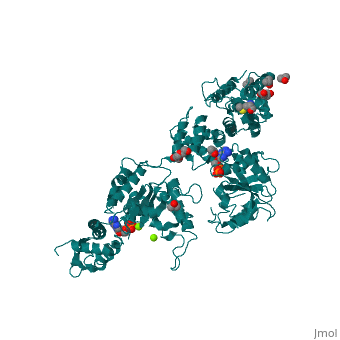Hsp100
From Proteopedia
The HSP100 proteins are also known as AAA+ chaperones that act as unfoldases and disaggregases, forceful unfolding motors that deliver substrates to compartmentalized proteases or disassemble aggregates containing misfolded proteins. They form oligomeric ring structures and have mechanical actions such as threading polypeptides or polynucleotides through a central channel in order to unfold or unwind them. AAA+ proteins function in various cellular processes, including the disassembly of complexes, for example the SNARE complexes that bring membranes together for vesicle fusion. The role of chaperone members of this family is best characterized in regulated proteolysis. At the core of these compartmentalized proteases is a stack of co-axial ATPase and protease rings, formed either by separate functional domains of a single subunit type (as in the bacterial Lon protease) or in separate ATPase and protease subunit rings (as in the HslUV (also known as ClpYQ) complex). In HslUV, both rings are hexameric, whereas others such as ClpAP have a symmetry mismatch with hexameric ClpA ATPase and heptameric ClpP protease rings87. Although the eukaryotic proteasome is much more complex, it has the same core architecture, and its regulatory cap contains a heterohexamer of ATPase subunits (RPT1–RPT6) that performs the same unfolding and threading functions [1] to the rescue. References
|
| ||||||||||

